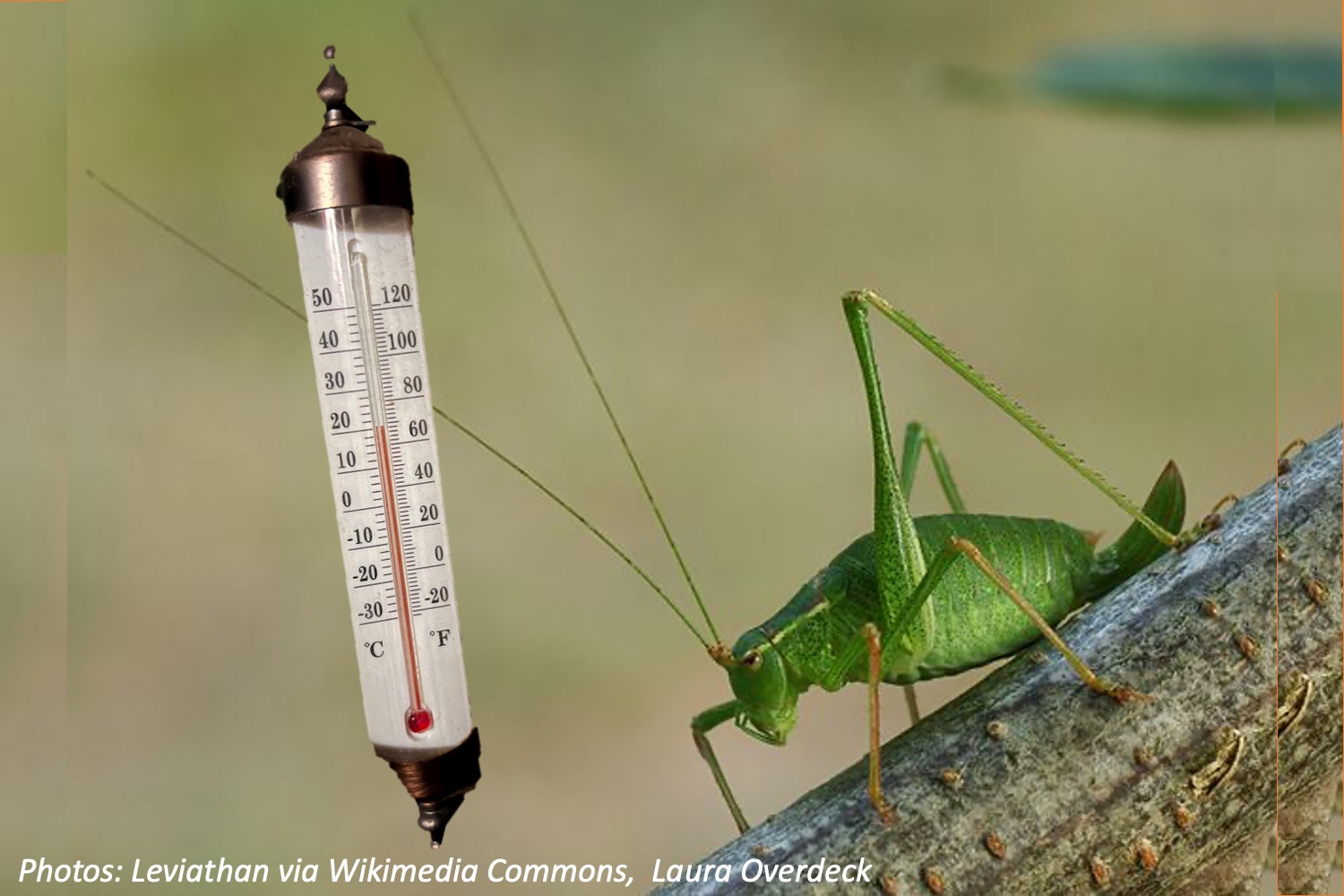We humans aren’t the only creatures who do math. So do crickets. Crickets chirp by rubbing their legs together (the boy crickets, at least). The warmer the weather, the faster they chirp — and the speed of chirping tells us the temperature outside! Count the number of chirps in 14 seconds, then add 40. That number roughly tells you how warm it is outside in degrees Fahrenheit. Next time you hear crickets, try it out!
Wee ones: If you’re counting cricket chirps, what number do you say right before the 7th chirp?
Little kids: A cricket has 6 legs, like any insect. If he’s rubbing 2 legs together to chirp, how many legs does he have left to stand on? Bonus: If you’ve been counting for 9 seconds, how many seconds until you have your full 14 seconds of chirps?
Big kids: If you count 20 chirps in that magical 14 seconds, what’s the outside temperature in Fahrenheit? (Reminder if needed: You count the chirps, then add 40.) Bonus: If a cricket chirps 3 times per second, is it warm enough out to melt a chocolate bar, which melts at 88 degrees?
The sky’s the limit: Who’s chirping faster, a cricket who chirps 12 times in 15 seconds, or a cricket who chirps 36 times in a minute?
Answers:
Wee ones: 6.
Little kids: 4 legs. Bonus: 5 more seconds.
Big kids: 60 degrees Fahrenheit. Bonus: No, because 3 times per second for 14 seconds is 42, plus 40 gives you only 82 degrees.
The sky’s the limit: The first cricket. 36 chirps in 60 seconds is the same as 9 chirps in 1/4 of a minute, or 15 seconds. The first cricket chirps 12 chirps in that same time.



